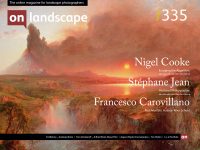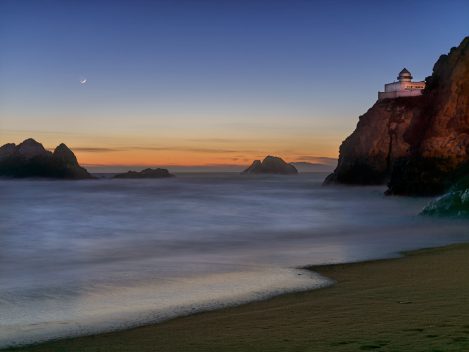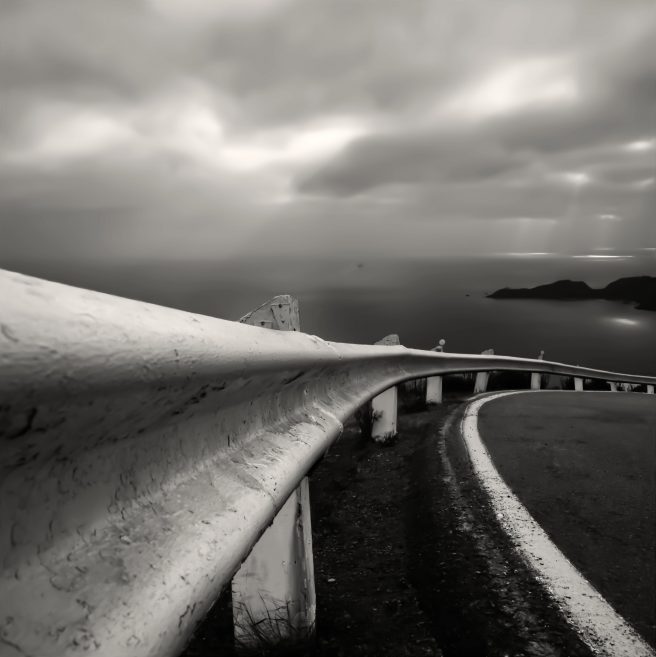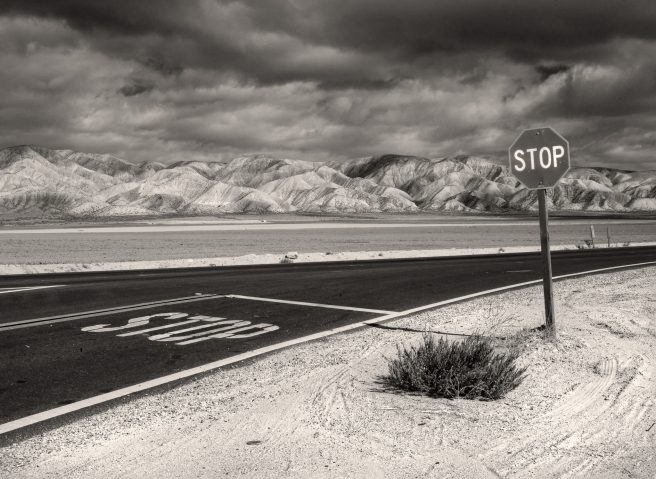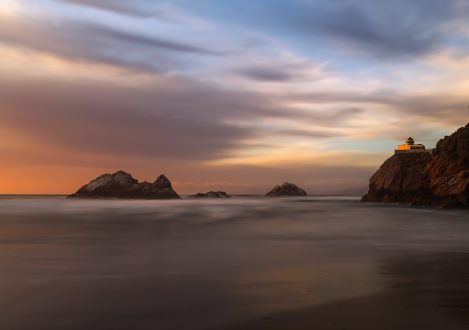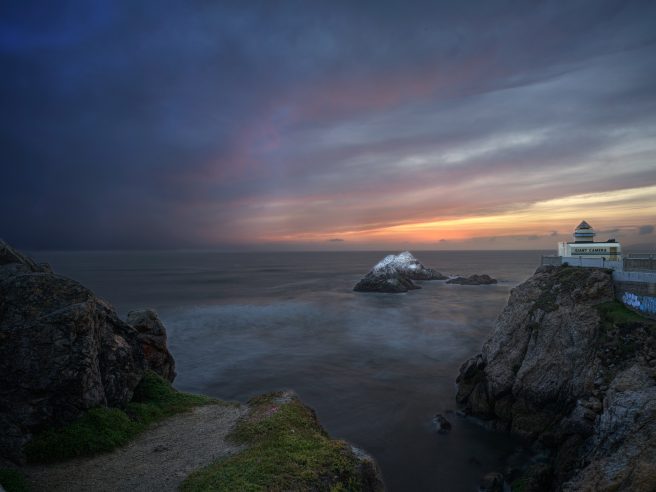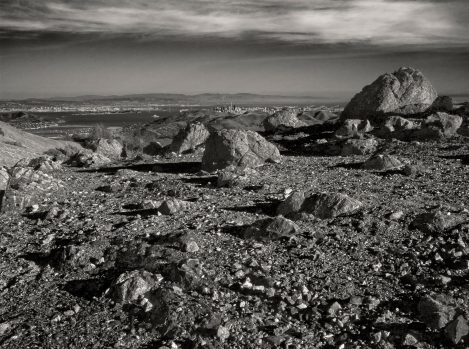Weighing In Against Conventional Wisdom

Tom Zimberoff
Tom Zimberoff is a classically-trained clarinetist who studied music at the University of Southern California before pivoting to photojournalism. Traveling the world, he’s shot many magazine covers and covered hundreds of historical and breaking news stories. His career literally took off when he stowed away aboard a helicopter carrying the military dictator of Panamá. With no time to think about the possibility of being invited to exit the aircraft before it landed, he was hoping for exclusive photos of the camera-shy ruler. It turned out to be his entrée to more than two decades of shooting for TIME magazine. Later, he shot advertising campaigns for Fortune 500 companies, the U.S. Navy, and Hollywood movie studios.
Everybody’s got a camera.
A generation raised on the internet and the iPhone experience photography as a seamlessly integrated and effortless part of their lives; just one more quotidian activity automated by technology to subordinate human decision-making. Pro photographers notwithstanding, legions of people compulsively take picture after picture, hoarding them in profusion, never to be looked at again after a fleeting debut on a tiny screen.
Once, as a society, we cherished the “Kodak Moment,” a marketing masterstroke that now feels quaint, a victim of what I’ll call photobesity: a deluge of snapshots made so mindlessly and frequently that they’ve devolved into pullulating yottabytes of digital dross. Visually preserved memories, once curated to be physically shared and displayed with pride, now languish in a virtual vault less visited than that proverbial shoebox full of family vacation photos, forgotten in a dark closet. That closet is now called “the cloud.” And we are continually nickel-and-dimed by Apple, Google, and Dropbox, dunning us, or surreptitiously renewing our subscriptions, to pay for ever-increasing gigabytes of ephemeral storage space for our abandoned pictures.
Forget, for a moment, the environmental cost of this ever-billowing cloud—the power plants needed to support an ever-increasing number of gargantuan server farms. This phenomenon comes at the cost of our eidetic memories, the deeply embedded kind that linger in our mind’s eye and would otherwise resurface vividly and unexpectedly throughout our lives. Instead, the very act of snapping a picture distances us from the moment we seek to preserve, trivialising it. The camera captured it, so I don’t have to.
Exposing film, from sprocketed rolls to sheets the size of an iPad, then developing it and enlarging prints in a darkroom filled with secret sauces, may give some photographers a greater sense of accomplishment. Or maybe they only want their audience to believe that narrative to cultivate an illusion of rigor, so their work is taken more seriously. Maybe they’re trying to mitigate a sense of guilt: If it’s too easy, anyone could do it. Or maybe it’s just a combination of nostalgia and curiosity that drives them.
Whatever their motivation, a fallacious contention has circulated that shooting film, which is far more expensive than it was in pre-digital days, makes photographers more discerning about when to press the shutter than sloppy digital shooters who machine-gun dozens and dozens of pictures, hoping to nail one good shot out of the whole nine yards. That’s just nuts.
George Bernard Shaw, himself an avid amateur shooter, famously wrote, “The photographer is like the cod which produces a million eggs in order that one may reach maturity.” Wry joke or literal critique, critics today still say digital shooters rely on algorithms to correct poorly-exposed pictures—a crutch. But younger photographers may be surprised to learn that during the heyday of magazine photojournalism, the amount of film I’d shoot for a single assignment might rival their annual output. They don’t ration film because they’re more discerning but out of necessity — because it is ten times more expensive now than it used to be. Let’s see. Should I start my next project on this same roll of film? I’d hate to rewind it and waste those last nine frames.
I once worked with a photo editor—my client was a TV network—who admonished his minions, “Film is cheap; shoot by the pound!” It was the fastest and cheapest way to create colour “dupes” (i.e., copy 35mm slides) for distribution to, and publication by, affiliate TV stations and advertising outlets across the country. A Nikon with a motor-drive did the trick.
That’ll never happen again. But pros today—film and digital—remain as conservative as ever about how many frames we shoot. No serious shooter sprays and prays. Who wants to sift through garbage for endless hours in post-production? “Post”: what we used to call editing.
Critics of digital photography often forget that darkroom techniques were manipulation. Pushing and pulling chemical development times, dodging and burning prints, layering and sandwiching negatives for HDR effects—these were pre-Photoshop tools. They worked. Just more cumbersome. Film has always been open to skilful manipulation.
Consider Kodak’s ubiquitous Brownie camera (1900–1967) and its slogan: You Press the Button, We Do the Rest. That was as close as we once got to instant gratification with photography. Aside from keeping my fingernails from turning brown by immersing my hands in sloshing trays of selenium toner and Dektol, the instant gratification of an LCD screen is the only thing that’s new today — the erstwhile original Polaroid notwithstanding. But even an LCD can be a curse. Staring at each shot the instant it’s taken is just a new form of impatience. Ask yourself: how do you feel waiting three minutes in front of a microwave vs. two hours for an oven-baked meal? What could you accomplish—and how much more satisfied would you feel—in the meantime?
It used to be that no one had a choice about shooting film; only about which kind to use for which application. I loved processing film and making prints, and fondly remember the smell of gelatin film emulsion. Potassium ferricyanide and sodium thiosulfate not so much. Today, when film is resuscitated after its last agonal gasp, the arcana of working in the dark with noxious and environmentally unfriendly fumes, it may be novel for some, but it represents a regressive response to the criticism that photography is too easy: My kid could do that! Who are you with your 11x14 Deardorff, to tell me I can’t do the same thing with my iPhone?
To be clear: artists who shoot only film often claim to see subtle differences that justify their fuss. I think that’s silly. Been there. Done that. Got the T-shirt. I dare anyone to eyeball any difference between one of my digitally printed photographs and an older, silver-gelatin one. That wasn’t true ten years ago. It is now. Even large-format sheet film can no longer claim qualitative superiority.
However, film does win on one front: archival conservation. It’s easier to keep for posterity than JPEG, RAW, TIFF, or DNG files stored inside that fugacious shoebox in the sky or even on a personal hard drive array. Then again, I won’t be around six hundred years from now to care. But much sooner than that, if a not-too-farfetched and foreboding sunspot flares up and fries Amazon’s Web Servers, or the Russians reduce Google to gobbledygook with a malware attack, you’re out of luck. Or what if you haven’t had the discipline to back up your photos regularly enough to keep up with the tick-tock of technology, let alone the physics of entropy? The CD-ROMs you might have socked away will eventually succumb to “disc rot.” (Do I need to burst your bubble by citing oxidation of the shiny reflective layer and a breakdown of the polycarbonate substrate, delaminating the whole schmear?) Or what if no computer, say, thirty years from now, can still “read” those ones and zeros you assiduously backed up? On a more optimistic, techno-utopian note, maybe we’ll learn how to store infinitely contiguous quantafloods of data inside strands of DNA—liquid drops of double helix repositories lasting millions of years1?
Practically speaking, I used to put my film in an envelope and stick it in a drawer, relying on the likelihood that my photographs will be seen by my descendants living on Mars (notwithstanding fires and floods on Earth in the meantime). Want your photos to last long enough to be read by Jean-Luc Picard? Make prints. Especially pigment prints on rag paper—they’ll last as long as silver prints, whether colour or black-and-white.
As for film evangelists, their message is clear. Their ritualistic return to darkroom alchemy, economically moribund though it is, seems to me like a bid to bestow themselves with special powers that produce superior results and an aura of exclusivity, whether by divine favour or the favour of similarly sorcerous academics, critics, curators, and gallerists. Their anachronistic zeal for antediluvian technology reminds my cynical side how ancient priests shrouded their religious rites in mystery and complexity to awe an uninitiated populace and reinforce their own elevated status.
Let’s be clear: Taking photographs is and always has been easy. Making them never was. That’s the story—for me, for all working artists and photojournalists, whether we prefer digital or analogue tools in our camera bags, is that we do indeed make photographs. Let the dilettantes keep taking them.
References
- Could We Store Our Data in DNA?, Matthew Hutson, The New Yorker

